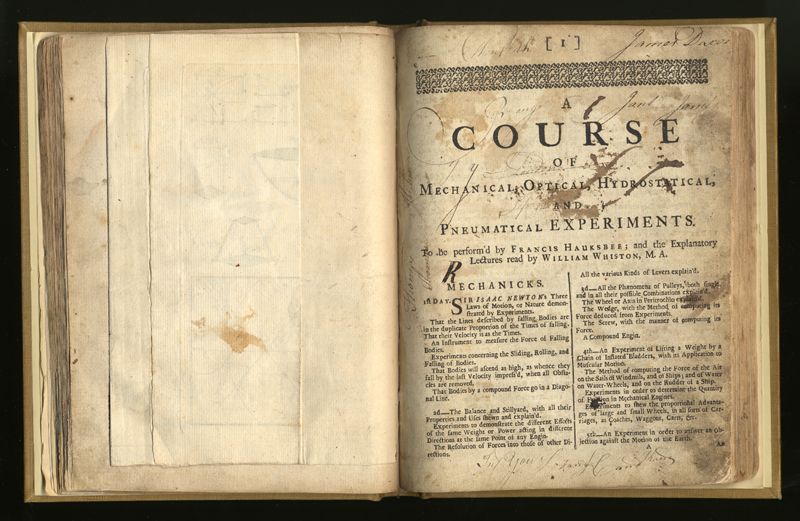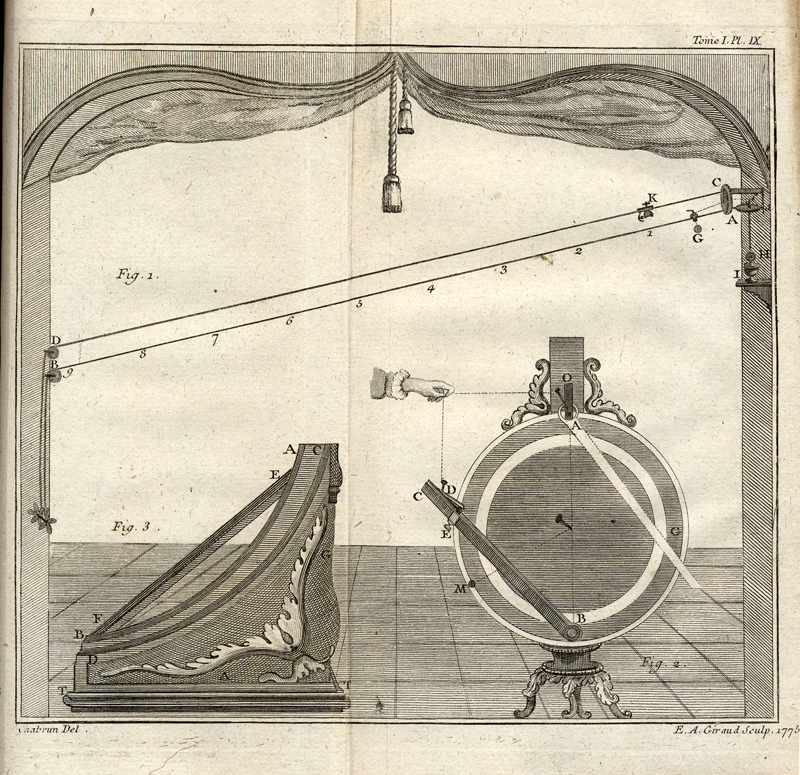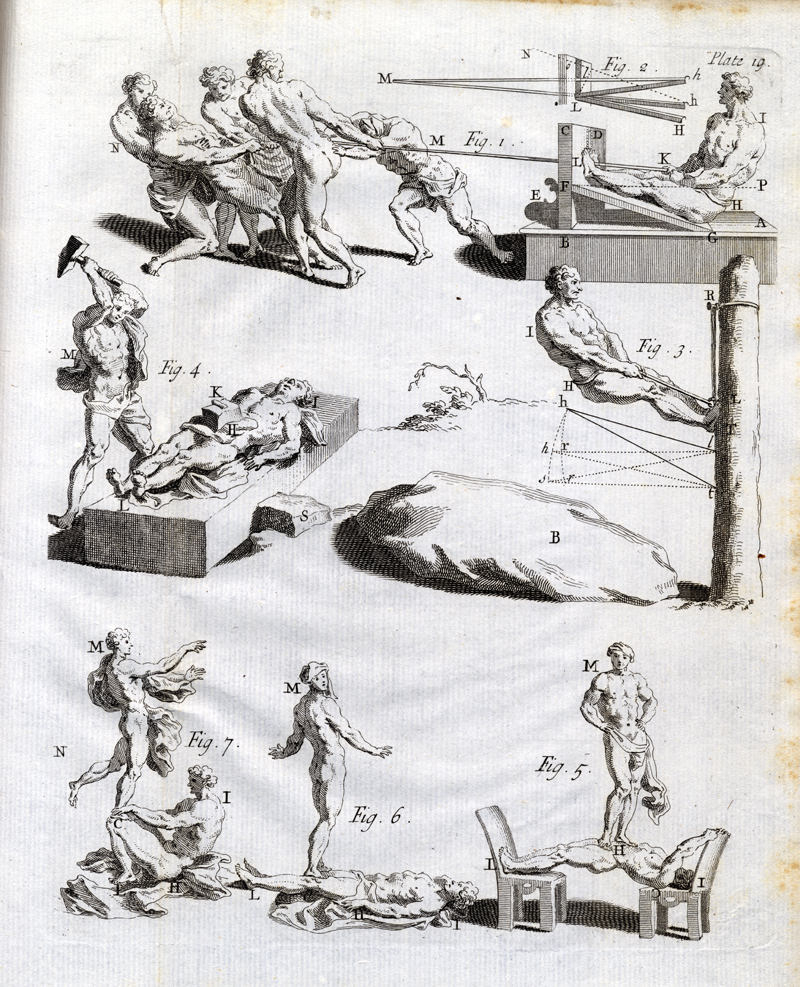A course on experimental philosophy would normally start with mechanics, which explains the physical world and forces. The point of departure would be Newton’s laws of motion.

Francis Hauksbee the younger (1688-1763) and William Whiston (1667-1752): A course of Mechanical, Optical, Hydrostatical and Pneumatical experiments, c. 1714

Joseph Aignan Sigaud de la Fond (1730-1810): Description et usage d’un Cabinet de Physique Experimentale, 1775, vol. 1
The demonstrator would show apparatus which explained motion of objects, gravitation and forces, for example a model of a pile driver; apparatus for mechanical powers. This illustration shows instruments that demonstrate the principles of gravity: to the left an inclined plane used to compare the velocity of falling bodies in a diagonal line or in a curved path; and to the right the movements of a pendulum.

John Theophilus Desaguliers (1683-1744): A Course of Experimental Philosophy, 1734, vol. 1
Some principles of force could be demonstrated by performers or strongmen, as shown in the illustration below. Figure 4 shows a man using the force of a sledgehammer to hammer a piece of iron laid on the chest another man who is lying on his back. The author states that the larger the piece of iron laid on the man’s chest, the less the force of the strike is felt. It could then be revealed that it is not the strongmen who have a particular resistance to the heavy blows.
